Donald Duck’s design has undergone subtle changes over the years, but one of the most celebrated evolutions was in the 1930s when his appearance became more refined, solidifying his iconic sailor outfit, webbed feet, and distinctive sailor cap, creating the timeless image we know today.
If you are in hurry there is a comparison table at the end of the article where the evolution of Donald duck design across the years is listed.
Table of Contents
Introduction
Well, howdy folks! Today, we’re diving headfirst into the delightful world of design evolution, and our quacking guide for this journey is none other than the beloved Disney character, Donald Duck. Just like fine wine, Donald’s design has aged gracefully over the years, and we’re here to showcase how he’s changed from head to webbed toe. So, hang on to your sailor hats, folks, as we embark on a timeless adventure through the evolution of Donald Duck design.
1. Donald’s Humble Beginnings (1934)
In 1934, Donald Duck made his grand entrance into the world of animation in the short film “The Wise Little Hen.” At this early stage, Donald Duck’s design was characterized by simplicity and charm. His appearance consisted of:
- Sailor Suit: Donald’s iconic sailor suit was already a part of his design from the very beginning. This suit included a white top with short sleeves and a sailor’s collar, along with blue pants and a red bowtie.
- Sailor Hat: One of the most recognizable aspects of Donald’s design was his sailor hat, adorned with a black ribbon and a bow.
- Webbed Feet: Donald’s webbed feet, a hallmark of duck characters in Disney, made their first appearance, adding a touch of authenticity to his portrayal.
While Donald’s design was relatively basic at this point, it laid the groundwork for the character’s enduring appeal. His quirkiness and irritable personality shone through in his exaggerated facial expressions and physical antics.
2. Colorful Cartoon Transition (1930s-1940s)
As the 1930s transitioned into the 1940s, animation technology and techniques advanced, allowing for a burst of color and refinement in Donald’s design:
- Color Palette: Donald’s color palette became more vibrant and dynamic. His sailor suit now featured brighter shades of red, blue, and white. His red bowtie stood out prominently against the white shirt.
- Exaggerated Expressions: Animators began to experiment with Donald’s facial expressions, emphasizing his irritable and expressive personality. His eyes widened in frustration, and his beak contorted into various shapes, enhancing his comedic appeal.
3. World War II and Donald’s Utility (1940s)
During World War II, Donald Duck design went through significant adaptations to reflect the wartime era:
- Military Uniforms: In a patriotic show of support for the war effort, Donald frequently donned various military uniforms in wartime-themed cartoons. He became a symbol of patriotism, transitioning from his classic sailor attire to outfits like a soldier’s uniform or a sailor in the Navy.
- Message of Patriotism: These wartime cartoons featuring Donald demonstrated his versatility as a character, as he showcased different roles while maintaining his essential design elements. His adaptability and the patriotic messages of these shorts resonated with audiences during the war.
4. Post-War Transformation (1950s)
After World War II, Donald Duck design returned to its classic roots:
- Back to Basics: In the 1950s, Donald reverted to his classic sailor suit design, embracing the familiar white top, blue pants, and red bowtie. His sailor hat remained a key part of his appearance.
- Refined Appearance: This era saw a more polished version of Donald’s design. His sailor suit had cleaner lines and a renewed emphasis on its classic elements.
- Expressive Character: Despite the refined appearance, Donald’s expressions and body language continued to be central to his character. Audiences connected with his relatable frustrations, making him a beloved figure in the world of animation.
5. The Modern Era (1960s-Present)
In the latter half of the 20th century and into the 21st century, Donald Duck design continued to evolve:
- Sleeker Look: In the 1960s, Donald’s design underwent further refinement, resulting in a sleeker and more streamlined appearance. His sailor suit maintained its classic charm but featured cleaner lines and a modern touch.
- Versatile Character: Animators explored new settings and scenarios for Donald while keeping his essential design intact. This adaptability allowed Donald to remain a relatable and enduring character in the modern era of animation.
As we’ve journeyed through the decades, we’ve witnessed the fascinating evolution of Donald Duck’s design. From his humble beginnings in black and white to his modern makeover in the colorful world of animation, Donald’s design has not only endured but also continued to captivate audiences of all ages.
Modern Sensibilities
- Donald’s design became sleeker and more streamlined in the 1960s. His sailor suit maintained its classic charm but with cleaner lines and a modern touch.
- Animators began to explore more settings and scenarios for Donald, highlighting his adaptability while keeping his essential design intact.
Comparison Table: Evolution of Donald Duck Design over the years
Here is the comparison table for the evolution of Donald Duck Design over years with the animations he appears:
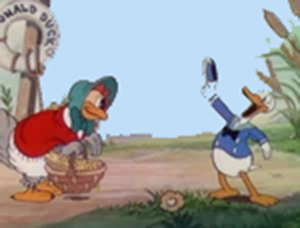
The Wise Little Hen (1934)
Donald’s debut cartoon featuring a longer bill, longer neck, and white eyes. His bow tie is black, and his hat is white.
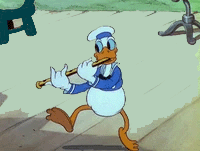
The Band Concert (1935)
In this full-color appearance, Donald’s eyes are colored blue for the first time.

Moving Day (1936)
Marked the first cartoon to feature Donald’s more familiar design, with a shorter bill.
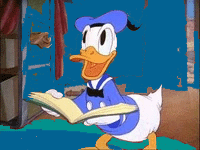
The Autograph Hound (1939)
Donald’s hat becomes blue, and his shirt collar darkens in shade.
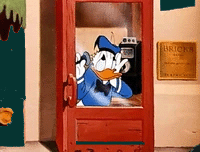
Donald’s Double Trouble (1946)
Buttons on Donald’s shirt are removed in animated appearances.
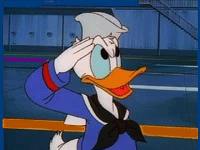
DuckTales (1987-1990)
Donald adopts a Navy uniform, rarely wearing his classic sailor suit.
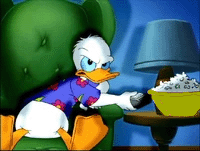
Quack Pack (1996)
Donald’s main attire consists of a blue Hawaiian shirt, with occasional flashbacks to his sailor suit.
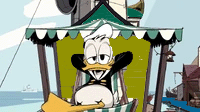
DuckTales (2017-2021)
Donald’s main outfit is black with yellow buttons, and his hat returns to white. His bow tie is absent.
FAQs About Donald Duck’s Design Evolution
Let’s answer some quacking questions about the evolution of Donald Duck’s design:
1. Has Donald Duck Design Ever Changed Drastically?
While Donald Duck design has seen refinements and adjustments over the years, his basic elements, such as his sailor suit, sailor hat, and bowtie, have remained consistent.
2. How Do Donald Duck Design Changes Reflect His Character?
Design changes often reflect the era and the specific role Donald plays in animated shorts. His military uniform during World War II, for example, showcased his adaptability and served a patriotic purpose.
3. Has His Donald Duck Design Adapted to Modern Technology?
Donald Duck design has adapted to new animation techniques and technology, allowing animators to create more dynamic and expressive movements while preserving his classic appearance.
Conclusion
And there you have it, folks – the quacking evolution of Donald Duck design. From his humble beginnings in black and white to his modern makeover in the colorful world of animation, Donald’s design has endured the test of time. Through wars, laughs, and adventures, he’s remained a beloved icon with a design that’s as timeless as his character.
So, the next time you see that sailor suit and sailor hat, remember the journey of design evolution that brought Donald Duck to life, proving that some things, like his irritable charm, never go out of style. The Evolution of Donald Duck Design – Showcase how he has changed over the years continues to inspire and captivate audiences around the world. Quack on, Donald!


Pingback: What best Donald Duck Can and cannot do? - ALLOWEDorNOT